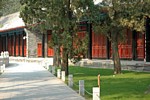Confucius Temple & Imperial College, Beijing, China
No person has left a deeper mark on Chinese culture than Confucius, who lived 2500 years ago in an age of social turmoil. He was a member of the scholar or professional class who managed to become a mid-level bureaucrat and sought to define and practice the art of ruling.[1] Though, like Plato, he had no success in the real world, he laid the foundation of a great deal of subsequent Chinese reflection on the education and comportment of the ideal man, how he should live and interact with others, and the forms of society and government in which he should participate.[2]
Like the Buddha, Jesus, and Socrates, Confucius too never wrote a word. Even the Analects of Confucius, considered closest to his thought, was compiled after his death by many generations of disciples. To understand what he inspired in China, a better approach is to read the Analects along with three exegetical works that form the animating core of Confucianism, i.e., the Confucian canon—the Book of Mencius, the Great Learning, and the Doctrine of the Mean. (read more)
Confucius Temple (more) 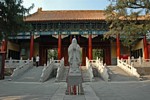 |
Building in the courtyard  |
Temple under renovation 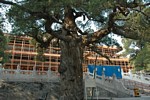 |
Courtyard (more) 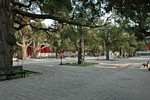 |
Ancient Cyprus tree 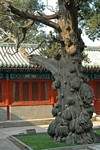 |
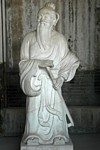 |
||
Forest of 190 stelae ... 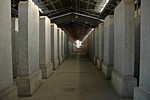 |
... recording 13 Confucian classics  |
||
Another Confucius statue  |
Imperial College Archway 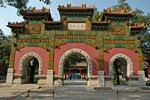 |
Mr. Confucius (more) 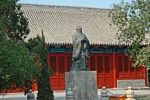 |
|
Main assembly hall (inside) 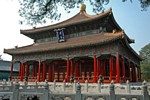 |
Imperial garden 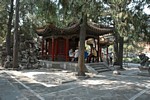 |
||
Confucius 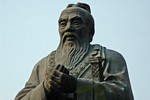 |
Confucius  |
||
Designed in collaboration with Vitalect, Inc. All rights reserved. |









